Understanding your postpartum belly – what doctors and midwives want you to know
What your tummy will look and feel like after giving birth, plus tips for a healthy recovery
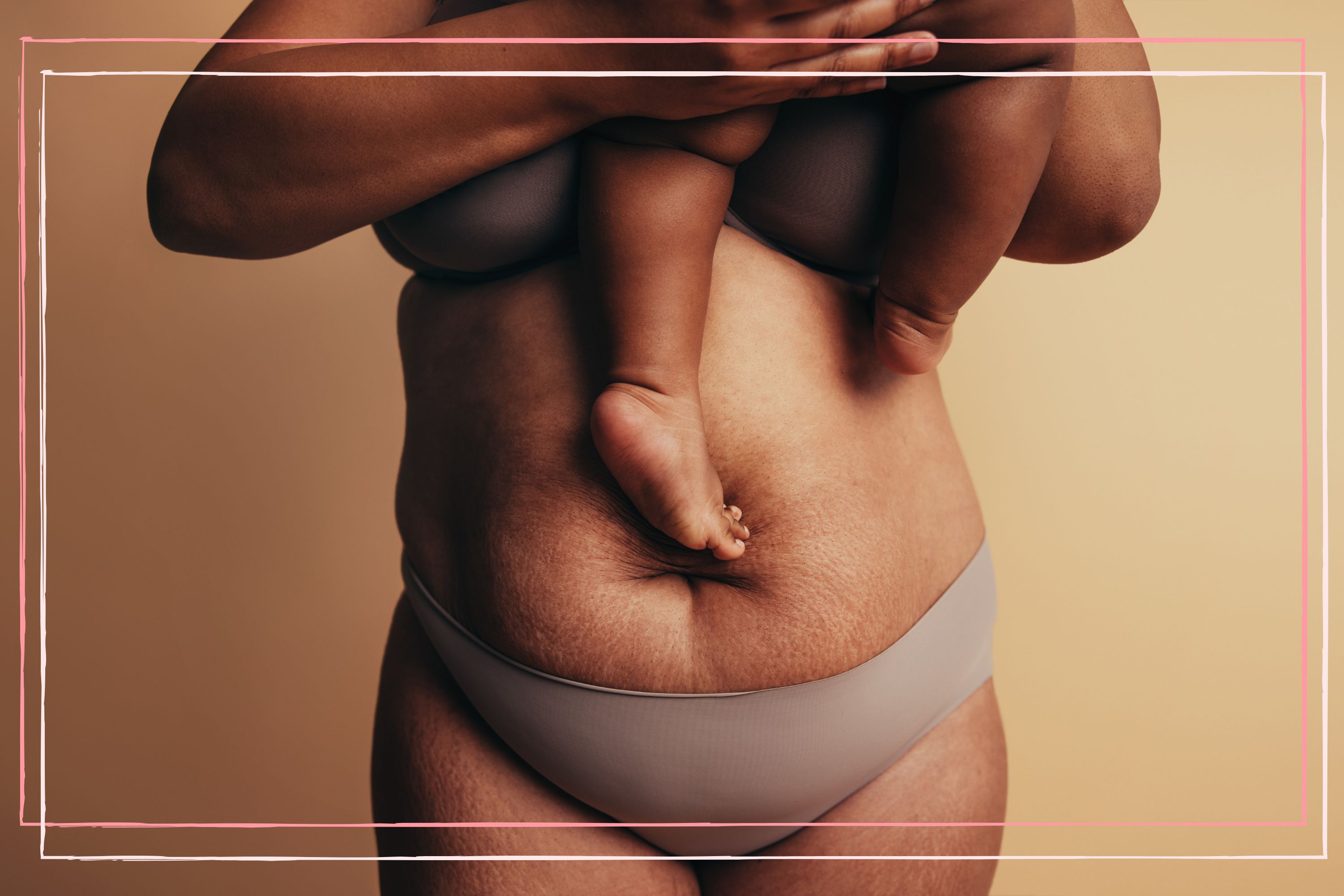

If you’re worried about what your postpartum belly might look and feel like, you’re not alone. “It’s something I get asked by new mums all the time,” says Dr Aarthi Sinha, a GP at Church Crescent Medical, who performs six-week postpartum checks for mums and babies. “They want to know what to expect and a timeline.”
Of course, much like pregnancy, every woman’s postpartum journey is unique and will depend on their specific circumstances. Factors including your pregnancy weight gain, whether you have a vaginal birth or caesarean section and lifestyle factors, such how active you were before and during pregnancy, will all play a role in your tummy’s recovery.
However, there are common experiences, too. “I think one of the things that surprises women most often is that you still look pregnant when you’ve just had a baby, except it's all a lot softer and more jelly-like,” says Pip Davies, a practising midwifery sister known as Midwife Pip. “Sometimes that can make changes such as loose skin and stretch marks look more pronounced, because it's all a bit softer when you haven’t got a baby inside – and that's really normal.”
Something else that’s unfortunately normal is the pressure many women feel for their bodies to “bounce back” after giving birth – something Dr Sinha often hears at postnatal check-ups. But her advice for new mums worrying about their postpartum belly recovery is simple: “Don’t put too much pressure on yourself and allow up to a year.”
She gently adds that it can be helpful to adjust expectations, reminding that it’s normal for your stomach to look and feel different postpartum. “Your belly may not go back to exactly what the baseline was pre-pregnancy – but that's okay,” she says.
So what will your belly look and feel like after giving birth? To help you prepare for or navigate the postpartum period, below we’ve outlined what you can typically expect. We’ve also included first-hand accounts from mums, detailing their (sometimes conflicted) feelings about their postpartum belly.
What to expect from your postpartum belly
Changes in appearance
When consulting with new mums at the six-week postpartum check-up, Dr Sinha reports she typically expects to see the following:
Parenting advice, hot topics, best buys and family finance tips delivered straight to your inbox.
- Soft, loose skin: Following childbirth, women are typically left with weak, stretched skin and abdominal wall muscles, resulting in excess skin.
- Linea Nigra: During pregnancy, some women develop a dark line running from the belly button to the pubic area that can persist into the postpartum period. This should gradually fade.
- Stretch marks: These are common, and can be particularly prominent in black and brown skin tones. They should fade with time.
- C-section scar: Women who give birth via caesarean will have a scar around 10–20 cm long, just below the bikini line. It may look quite red or purple, potentially with some bruising. This should also fade over time, although may appear hyperpigmented or raised in darker skins.
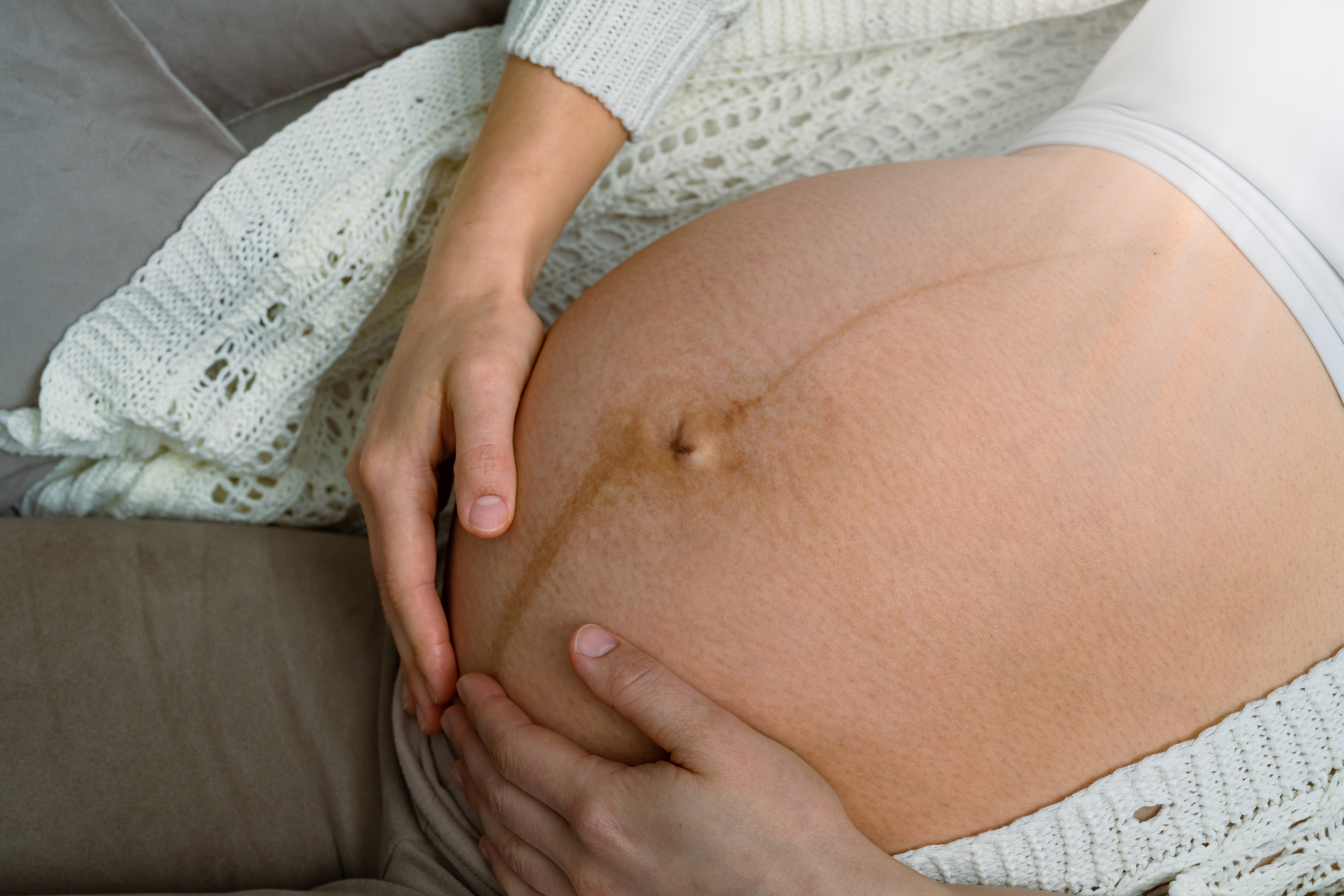
Size and shape
Many women expect their belly will return to its pre-pregnancy size once their baby has been delivered, but in reality this does not happen straight away. “A lot of women I see at the postnatal check expect that once the baby's out, the belly and uterus will instantly return to its pre pregnancy size – but this takes time,” says Dr Sinha.
An important factor is the distinction between what we typically think of when we talk about ‘the belly’ – that is, the muscles and fat of the abdominal wall – and the uterus. “Postpartum, it’s generally the uterus that determines the size of the belly – and this doesn’t contract back straight away” shares Dr Sinha. “It usually takes around three months for this to shrink back down to roughly pre-pregnancy size.”
Additional factors that play a role in your tummy’s post-pregnancy size include the excess fluids and natural weight gain associated with pregnancy, which can also take time to return to a pre-pregnancy state.
Muscle separation (diastasis recti)
Diastasis recti is the medical term for the natural separation of the rectus abdominal muscles (sometimes referred to as the ‘six-pack muscles’) during pregnancy. This causes the midline tissue that connects these muscles (the linea alba) to stretch and, in some cases, tear.
It typically presents as a bulge or ridge down the middle of the stomach. It’s something that all women will experience to some degree by their third trimester, says Midwife Pip, and this persists post-birth.
Once again, everyone’s recovery will be different. “For some women, this will heal or be much improved by about six to eight weeks postpartum,” shares Pip. “However, some may need to do specific exercises with a pelvic health practitioner to support the rehabilitation of the diastasis.”
If diastasis recti is a problem for you post-birth, speak to your GP who can refer you for physiotherapy.
6 ways to help your postpartum belly recovery
1. Eat a balanced diet
Your body needs the right fuel in order to heal postpartum, so now is not the time for restrictive dieting. “It’s really important not to scrimp on calories while your body is undergoing so much recovery,” shares Midwife Pip.
Instead, aim for a healthy balance of protein, high-fibre carbohydrates and dairy or dairy alternatives, with at least five portions of fruit and vegetables a day. This is especially important if you are breastfeeding, which can burn up to an additional 500-700 calories per day.
Of course, this can be a case of ‘easier said than done’ when you have a newborn baby to care for – something Pip fully appreciates. “I always say to just try and focus on eating 80% ‘good stuff’ and then 20% of whatever you need to survive.”
For more guidance, read our advice on what to eat postpartum, foods to eat while breastfeeding, as well as foods that give you energy
2. Stay hydrated
“Good hydration is also really important for healing,” says Pip, so make sure you are drinking plenty of fluids. The Eatwell Guide recommends everyone aim for six to eight glasses a day, although you may need to drink more if you are breastfeeding.
Water is an obvious choice, but low-fat milks and sugar-free drinks, including tea and coffee, are also good options.
3. Gentle exercise
If you had an uncomplicated birth, then it’s fine to start exercising as soon as you feel up to it – as per NHS advice. However, you should wait until your six-week postpartum check-up before starting or returning to any rigorous or high-impact exercise, particularly if you gave birth by C-section.
Dr Sinha advises a gradual approach when returning to exercise, sharing: “The main thing is to take it slowly and not to push yourself.” She advises starting with light, low-impact exercises that don’t involve weights, even if you did weight training before giving birth.
Midwife Pip agrees. “As a rough guide, I always advise rehabilitation followed by strengthening work and then, around 16 weeks, a guided return to impact exercises.”
Walking can be a great low-impact place to start. “Perhaps the best exercise is just pushing the baby in the pram for half an hour, three times a week,”says Dr Sinha. “From there, you can start stepping things up and use a light weight here and there, or a resistance band when you feel ready.” But, as with all exercise, she emphasises the need to listen to your body. “If it's too much, you feel tired or you’re in pain, then definitely stop.”
4. Care for C-section scars properly
If you gave birth by caesarean section, you’ll need to follow specific guidelines to aid your tummy’s recovery. You’ll need to avoid driving, exercise, heavy lifting and having sex for around six weeks to avoid placing increased pressure on your stomach and scar.
Dr Aarthi notes that you may need additional support during this time, such as help around the house and with caring for your baby. It’s also important to minimise the risk of infection, highlights Midwife Pip. You can do this by:
- Practising good hand hygiene
- Bathing or showering daily
- Keeping the area clean and dry
- Exposing the area to air as much as possible

5. Avoid belly wraps, supports and binders
So-called ‘belly wraps’ – also called postpartum belly supports or binders – are increasingly marketed to new mums. Whilst these may seem appealing to new mums looking to speed-up their postpartum recovery, Dr Aarthi advises against using them generically, and only on the advice of a postnatal physiotherapist.
“It’s important to understand why you’re using it and how. It’s like using a knee support when you don’t necessarily need one – there are implications to using them". She adds: “There might be a role for them if someone has extensive diastasis, but a specialist physiotherapist would need to make that call.”
6. Go easy on yourself
It’s natural to have mixed feelings about your postpartum tummy, given all of the changes outlined above. However, it can be helpful to adopt a mindset that acknowledges and celebrates the incredible journey your body has been on.
Pip shares: “It’s easy to assume that our bodies are going to ‘bounce back’ after we give birth, but often we need to reflect on the huge changes that they've undergone – we literally relocate organs and grow a whole other human life! So leaving marks of that journey behind is to be expected, and something to be proud of.”
What mums told us about the their postpartum bellies
As with most things related to pregnancy and birth, everyone’s postpartum experience will be unique to them – and that is true of your tummy’s recovery process, too.
Below, three mum’s talk candidly about how they felt about their bellies after giving birth, and share details of how they approached recovery.
“It’s been a long, slow journey – but that suited me”
Naomi Ancelotti Lesforis, mum to Arabella, valued taking her postpartum recovery slowly but surely.
“My postpartum recovery has been slow. My tummy was very sore and swollen right after birth with a lot of excess skin, so I gave myself time to heal before going back to exercise.
“I had slight diastasis recti (separation of the two muscles that run down the middle of the stomach), so did specific Pilates exercises to help with this before returning to regular Pilates (both mat and reformer) and yoga classes. Walking and breastfeeding also helped me lose weight from my stomach.
“It has been a long, slow journey but this has suited me. I still have excess weight and my tummy isn’t the same as it was pre-pregnancy, but I’m trying to embrace it as much as possible.”
“I care less about how my tummy looks after my second child”
Mum-of-two Hannah Levy experienced a shift in perspective after the birth of her second child, opting to take a more holistic approach to her changed body.
“After having my first child, Roman, I would look in the mirror and feel as though my body was not my own. I was acutely aware of my stomach being much bigger than it was before and I had lots of excess skin. I didn’t look like myself and I didn’t like it.
“Around nine months postpartum I started exercising lots and being cautious with food, and by the 18-month mark I felt relatively back to normal.
“But with my second child, Penelope, I put on more weight during pregnancy and my stomach was bigger afterward – it still is. However, this time I’m not so fixated on losing weight. Instead, I’m focused on slowly and steadily rebuilding my core with specific postpartum exercises.
“I’ve realised that it’s not all about what you look like, and this has meant I’ve been able to embrace my postpartum tummy. You can maybe dress differently, for example, and feel good that way.”
“I have a love-hate relationship with my postpartum tummy”
Two C-sections left Christofere with mixed feelings about her body.
“My recovery has been much harder than I thought it would be. My son was delivered by caesarean (my second C-section) and I was left with hard, painful cysts around my scar. This meant I was unable to exercise this area for a long time, and I still have a lot of extra skin around my tummy.
“My son is approaching three years old and I’m only just ready to start exercising, now that the muscles are stronger and most of my cysts have softened. I’ve signed up to a yoga studio, but I recognise that my tummy has changed for the long run and it will take time to fully recover.
“How do I feel about my postpartum belly now? It’s very much a love-hate relationship. I’ve struggled with having no control over how it looks. I don’t recognise my body and I’ve had to buy new clothes because my old clothes weren’t flattering around that area anymore.
“But I’m also extremely grateful because it carried my son when I thought I wouldn’t be able to have children. When I look at my scar I think about my son who made it through and it comforts me and makes me proud.”
The information on GoodTo.com does not constitute medical or other health advice or diagnosis and should not be used as such. Although GoodtoKnow consults a range of medical experts to create and fact-check content, this information is for general purposes only and does not take the place of medical advice. Always seek the guidance of a qualified health professional or seek urgent medical attention if needed.
Experts in this article:
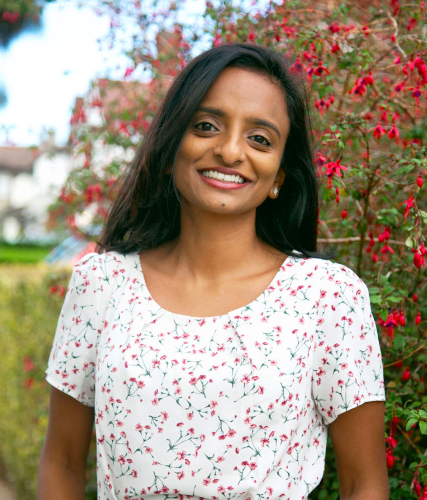
Dr Aarthi has been practising as a GP since 2014, mostly as a senior partner in practice. She completed her medical training at Guy’s and St Thomas’ Hospital Trust, part of King’s College London. She undertook further medical experience around the UK before settling in North London, where she completed my GP training. It is here that she set up her own practice, Church Crescent Medical. In addition to her medical degree, she also has a Bachelor's degree in Radiological Sciences and several diplomas in gynaecology, sexual health and occupational medicine.
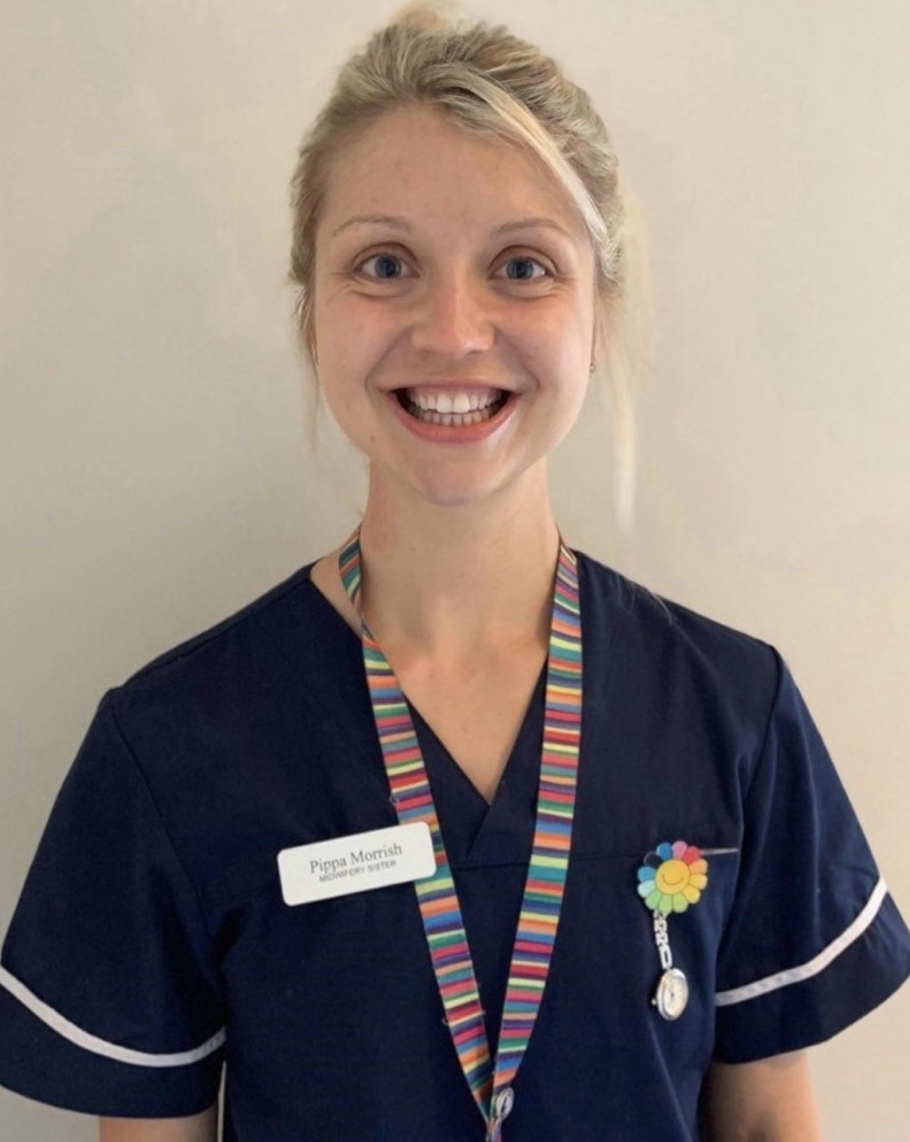
Pip currently works as a delivery suite sister and a specialist pelvic health midwife, and also offers pregnancy and postnatal support services via her Midwife Pip platform. Her qualifications include a first class BSc in Midwifery and a KGH Hypnobirthing Diploma. She also holds a pre and postnatal exercise qualification and is a certified Mummy MOT practitioner. She is the author of Midwife Pip’s Guide to a Positive Birth (£16.99, Amazon) and the host of The Midwife Pip Podcast, where she discusses all things pregnancy and postpartum.
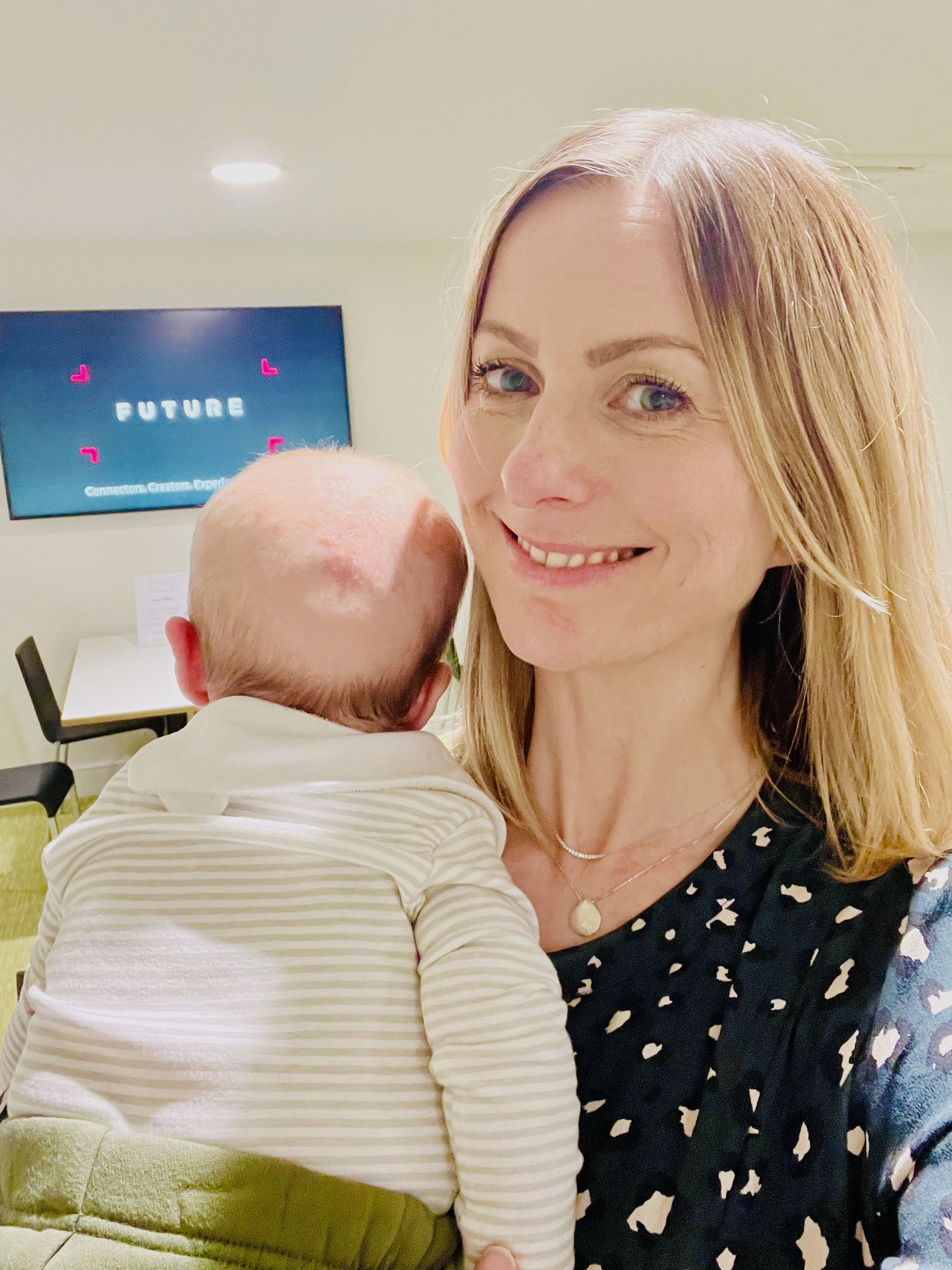
Stephanie is former Acting Editor and Content Director at GoodToKnow. She is also mum to son Woody (don't worry, they don't share a surname!), who was born in November 2021. As a journalist, Stephanie has over 17 years' of experience, and has worked as a digital editor and writer for brands including Stylist, Fit&Well, MSN and Woman&Home.